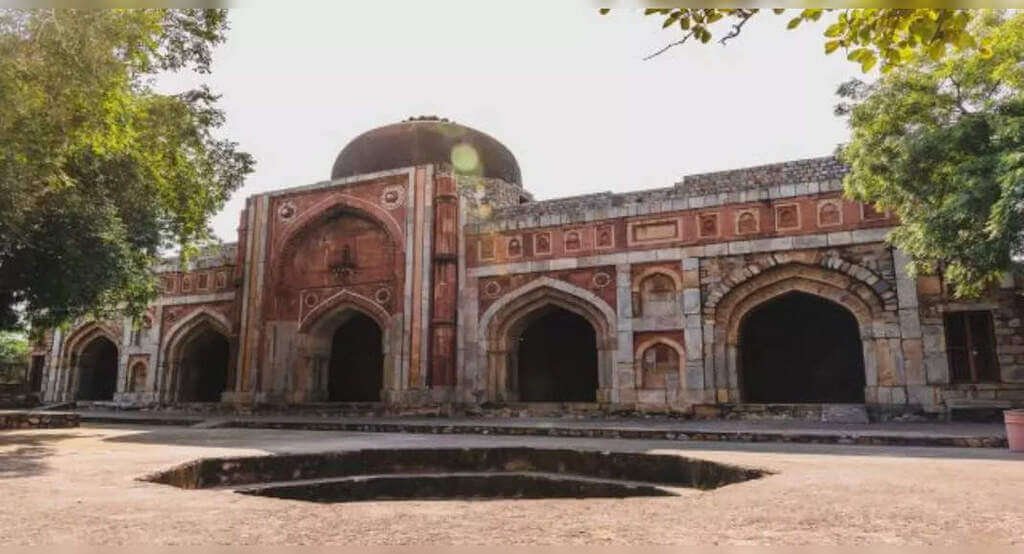The Jamali Kamali Mosque and Tomb, located in the Archaeological Village complex in Mehrauli, Delhi, India, comprise two monuments adjacent to each other; one is the mosque and the other is the tomb of Jamali and Kamali. Their names are tagged together, as “Jamali Kamali” for the mosque as well as the tomb since they are buried adjacent to each other. The mosque and the tomb were constructed in 1528-1529, and Jamali was buried in the tomb after his death in 1535.
Jamali Kamali Tomb and Mosque History

Shaikh Fazlu’llah, also known as Shaikh Jamali Kamboh or Jalal Khan, was a renowned Sufi saint. He lived during the Lodi Dynasty and the Mughal Dynasty, a period of the rule of Sikander Lodi to that of Babur and Humayun. The name “Jamali” is Urdu, though it originates from “Jamal” which means “beauty”. Jamali was a popular poet who traveled widely around Asia and the Middle East.
He became the court poet during the Lodi Dynasty rule and continued to be favored by the Mughal rulers, Babur and his son Humayun. His poetry reflected Persian mysticism of the times. His two well-known works are The Sun and Moon and The Spiritual Journey of the Mystics. According to reports, his tomb was completed during Humayun’s rule.
According to oral stories and traditions, Kamali was an unknown person who was Jamali’s disciple and lover. It is noted that, even though they were both males (as signified by a symbolic pen box on each of their graves), their graves are placed in a manner that implies that they were lovers.
Jamali Kamali Tomb and Mosque Architecture

The Jamali Kamali mosque is built in an enclosed garden area. This is believed to be a forerunner in the design of Mughal mosque architecture in India. The mosque is built in red sandstone with marble embellishments. This has a prayer hall that is fronted by a large courtyard. The prayer hall has five arches, with the central arch having a dome.
There is a total of 5 arches. The size of the arches increases towards the central arch, which is the largest of the five arches. The spandrels of the central arch are decorated with medallions and ornamentation. The rear end of the mosque has been provided with oriel windows, in addition to a small window on the central arch.
Also Read
TOP 18 MOST HAUNTED PLACES IN DELHI

